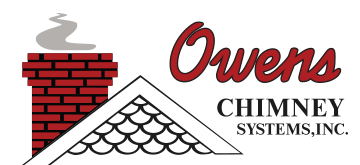There are many parts to the chimney – some that you could easily name and others that are a bit more obscure. There’s the hearth and the surrounding mantle, the firebox, the flue and the damper. However, there are less-known parts of the chimney that are equally important. One of these is the chimney cap.
Why Do You Need A Chimney Cap
A quality chimney inspector will look for a chimney cap during inspection. It’s not altogether uncommon for this important component of your chimney system to be missing because the importance is underestimated. There are two good reasons for you to have a chimney cap:
- A chimney cap stops things from blowing down your chimney. The wind can blow paper, trash, or dry leaves into your chimney, and these things can cause blockages in your chimney. Not only that, but your chimney is a perfect place for birds, squirrels, and other small animals to build nests. These nests and other blockages can catch sparks from your fire and cause a chimney fire to occur. And if your chimney hasn’t been cleaned lately, you could have a major creosote build-up in your chimney. This could cause a burning blockage to turn into a catastrophic fire.
- Not only are animals and garbage kept out of your chimney by a chimney cap, but so is precipitation. And when the snowy, sleety weather in North Carolina hits, a chimney cap will keep it out! According to wiseGEEK, moisture mixes with the creosote that can build up inside your chimney and this can eat away at the mortar in the firebox and flue. It can also cause rust to build up on the metal parts of the fireplace, such as the damper. So a chimney cap is really necessary!
The other reason that a chimney cap is important is because it keeps sparks from leaving your chimney and escaping onto your roof or the ground. Roof fire or, if conditions have been dry, a major ground fire that could harm not just your home, but other buildings in your neighborhood could result from these sparks.
Types of Chimney Caps
The National Fire Protection Association gives advice on what type of chimney caps are available. Each unique chimney shape requires it’s own standard chimney cap. Flat roofs require draft increasing chimney caps. You will need an adaptor to install this if you have a masonry chimney. Integral damper mechanisms result in a better draft and can be used in older fireplaces. On the other hand, top sealing fireplace dampers can reduce heat loss and downdrafts. To help you decide which cap is best for you, call the experts at Owens Chimney Systems.
Call Owens Today
Owens Chimney Systems knows what type of chimney cap you need, how to install it, and how to keep it in good repair. Trust the professionals at Owens Chimney Systems to care for your chimney cap and determine if it is working at its highest potential. Keep your chimney in great working order with the professionals at Owens Chimney System.
